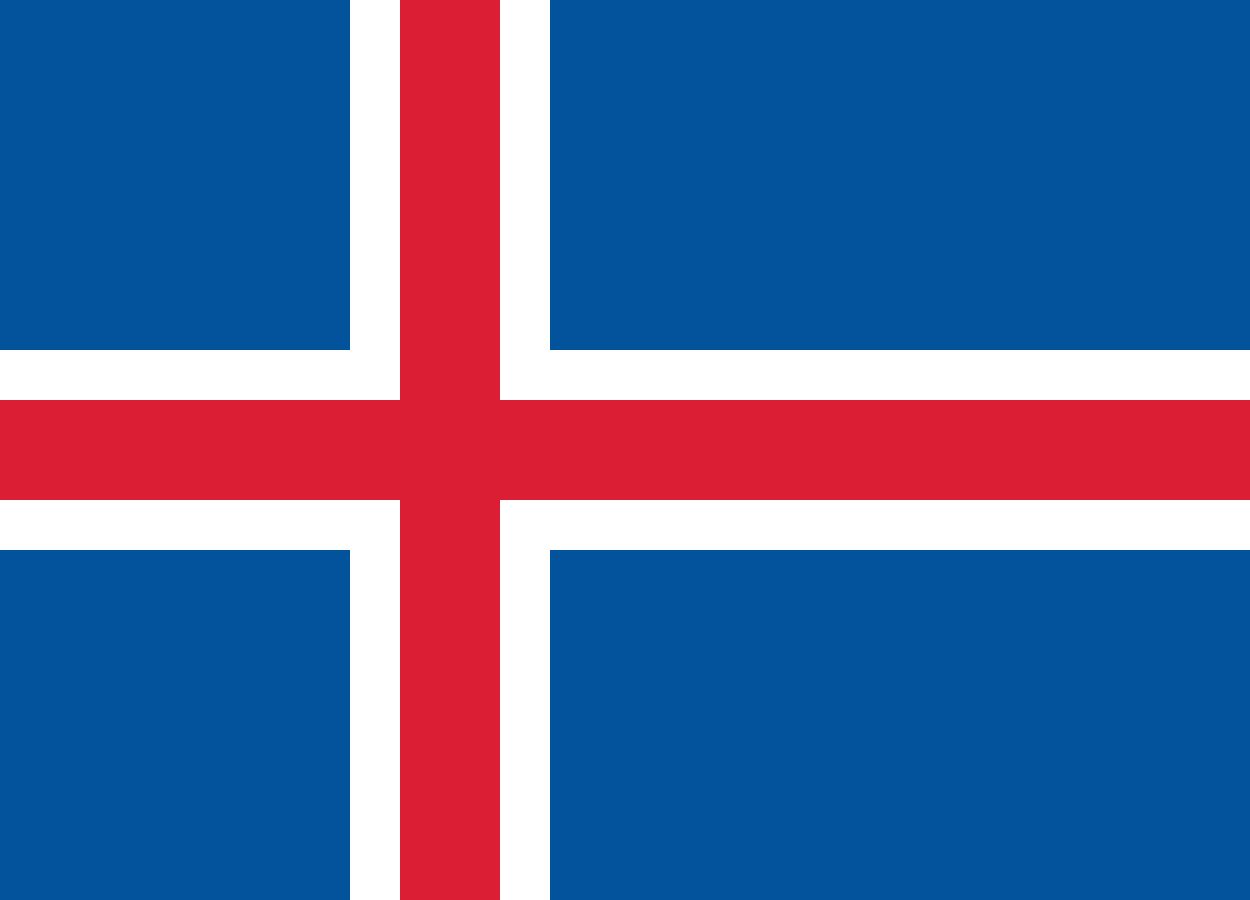The Iceland flag features three primary colors: Blue, White, Red. The table below showcases the common and popular codes for these colors in HEX, RGB, and CMYK formats, along with Pantone (PMS), RAL, and NCS (Natural Color System) references. Remember, HEX and RGB codes are ideal for digital projects and web design (including HTML and CSS), while CMYK values are tailored for printing purposes.
The flag of Iceland is a striking and meaningful symbol that reflects the country's geography, history, and national identity. Its design features a Nordic cross, which is a common element in the flags of other Scandinavian countries, emphasizing Iceland's cultural and historical ties to the region.
Design and Elements:
Background:
- Colors: The flag consists of a blue field with a white-bordered red cross.
- Proportions: The flag’s width-to-length ratio is 18:25.
Cross Design:
- Nordic Cross: The horizontal crossbar of the cross is shifted towards the hoist side, following the traditional Nordic cross design.
Symbolism:
Blue Field:
- Representation: The blue color symbolizes the Atlantic Ocean, which surrounds Iceland, and the island's maritime heritage. It also represents the clear blue skies of Iceland.
White Border:
- Representation: The white color signifies the ice and snow that cover much of the country’s landscape, symbolizing purity and the natural beauty of Iceland's glaciers and winter environment.
Red Cross:
- Representation: The red color represents the volcanic fires that have shaped the island's geology. It also symbolizes the vitality and endurance of the Icelandic people.
Historical Context:
Adoption:
- The current design of the Icelandic flag was officially adopted on June 17, 1944, when Iceland declared itself a republic, ending its union with Denmark.
Design Evolution:
- The design of the flag was influenced by the flag of Denmark (the Dannebrog) and other Scandinavian countries, reflecting Iceland's cultural and historical connections with the Nordic region. The colors of the Icelandic flag are also inspired by the natural elements of the country, as proposed by Einar Benediktsson, an Icelandic poet and lawyer.
Overall Significance:
The flag of Iceland is a powerful emblem of national pride, unity, and identity. Its colors and design elements encapsulate the country’s unique natural environment, its volcanic origins, and its maritime heritage. Displayed during national celebrations, official events, and international gatherings, the flag represents Iceland’s sovereignty and its place within the family of Nordic nations.
The flag serves as a unifying symbol for the Icelandic people, emphasizing their shared history, cultural pride, and values of resilience, purity, and vitality. It underscores Iceland's journey from a territory under Danish rule to an independent republic, highlighting the nation's enduring spirit and its connection to the natural forces that shape its landscape.
